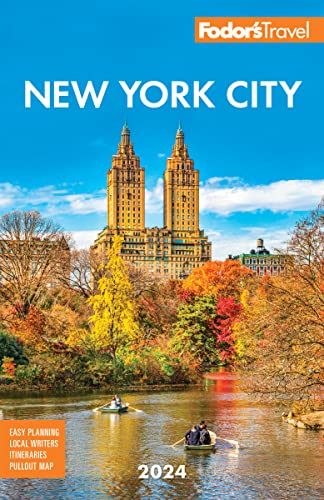Taxi Travel
Yellow taxis are almost everywhere in Manhattan, cruising the streets looking for fares. They are usually easy to hail on the street or from a cabstand in front of major hotels, though finding one at rush hour or in the rain can take some time (and assertiveness). Even if you're stuck in a downpour or at the airport, do not accept a ride from a "gypsy cab." If a cab is not yellow and does not have a numbered aluminum medallion bolted to the hood, you could be putting yourself (or at least your wallet) at risk by getting into the car.
A taxi shows that it's available with its rooftop light. If the numbers are lit, the cab driver is ready to take passengers—by law, he or she is required to take passengers to any location in New York City as well as Newark Airport and two adjoining counties, although only NYC and Newark locations are metered. Once the meter is engaged (off-meter rates are prohibited; even JFK and out-of-town "flat" fares must be recorded by the meter for the passenger’s protection), the fare is $2.50 just for entering the vehicle, which includes the first 0.3 mile, and 50¢ for each unit thereafter. A unit is defined as either 0.3 mile when the cab's cruising at 6 mph or faster or as 60 seconds when the cab is either not moving or moving at less than 6 mph. New York State adds 50¢ to each cab ride. There's also a 50¢ night surcharge added between 8 pm and 6 am, and a much-maligned $1 peak-hour surcharge is tacked on between 4 pm and 8 pm as well as a congestion surcharge of $2.50 for rides below 96th Street in Manhattan. Lastly, there is also a 30¢ "improvement surcharge" for all rides. All taxi drivers are required to accept credit cards as payment. On rare occasions, some who prefer cash claim their machines are broken when that isn't actually the case. If a driver waits until the end of the ride to mention a broken machine and you want to pay by credit card, you can ask the driver to turn off the meter and drive you to an ATM to see if this extra hassle is worth it.
One taxi can hold a maximum of four passengers (an additional passenger under the age of seven is allowed if the child sits on someone's lap). You must pay any bridge or tunnel tolls incurred during your trip (they are automatically added to the meter). In order to keep things moving quickly, all taxi drivers are required to use an E-ZPass in their cabs to automatically pay tolls, and they must pass the discounted toll rate along to the passenger; the total toll amount is added to the final fare. Taxi drivers expect a 10%–20% tip, which should be awarded for safe driving and good service.
To avoid unhappy taxi experiences, try to know where you want to go and how to get there before you hail a cab. Know the cross streets of your destination (for instance, "5th Avenue and 42nd Street") before you enter a cab. Also, speak simply and clearly to make sure the driver has heard you correctly—few are native English speakers, so it never hurts to make sure you've been understood. If headed for a far-flung location in Brooklyn or Queens, it can be helpful to pull up the location using Google Maps or a similar app, especially if the driver doesn't have GPS of his own. When you leave the cab, remember to take your receipt. It includes the cab's medallion number, which can help you track the cabbie down in the event that you've left your possessions in the cab, or if you want to report an unpleasant ride with the city's 311 service (or even to compliment your driver for a great experience). Any charges, such as those for bridges, are itemized on the receipt; you can double-check to make sure you were charged correctly.
Yellow taxis can be difficult to find in parts of Brooklyn, Queens, the Bronx, and Staten Island. To help with this issue, in 2013 the city of New York created a brand-new class of taxi service: apple-green Boro Taxis, which act like yellow taxis: they charge the same metered rates, accept credit cards, and must take you to any location within the city of New York. The difference is that green taxis are only allowed to pick up fares in non-Manhattan boroughs and in Manhattan locations above 96th Street.
If you're outside Manhattan and can't find a yellow or green taxi, it may be more convenient and less expensive to call a car service. Locals and staff at restaurants and other public places can often recommend a reliable company that's headquartered a particular neighborhood or borough. For example, Arecibo Car Service offers low rates from Brooklyn to any of NYC's airports. Most services offer flat-rate fares, but always confirm the fee when calling for the ride; a 10%–20% tip is customary.




